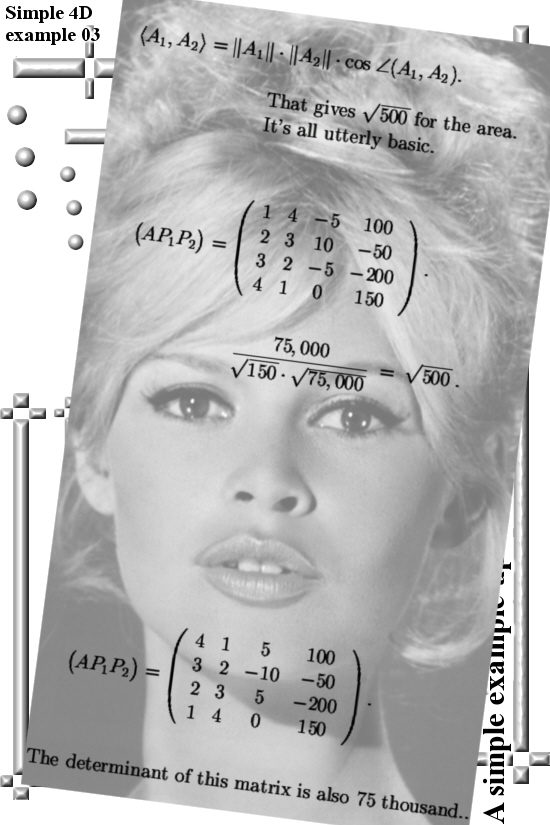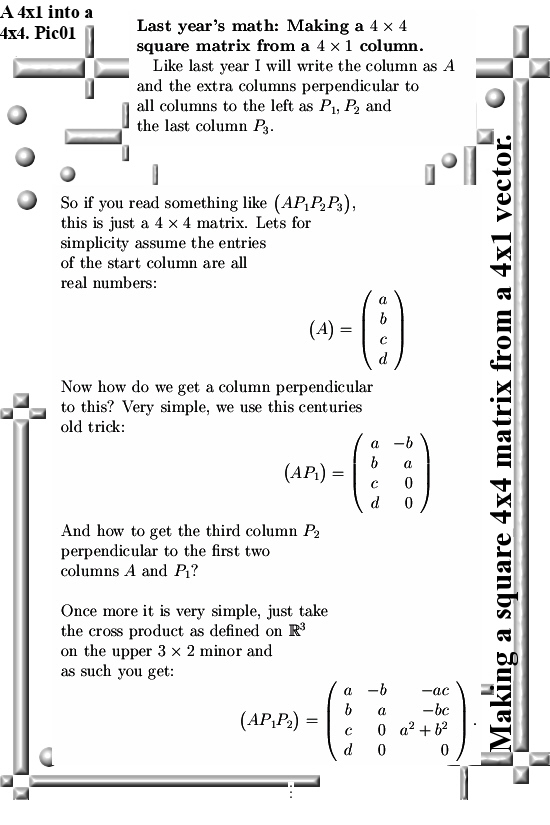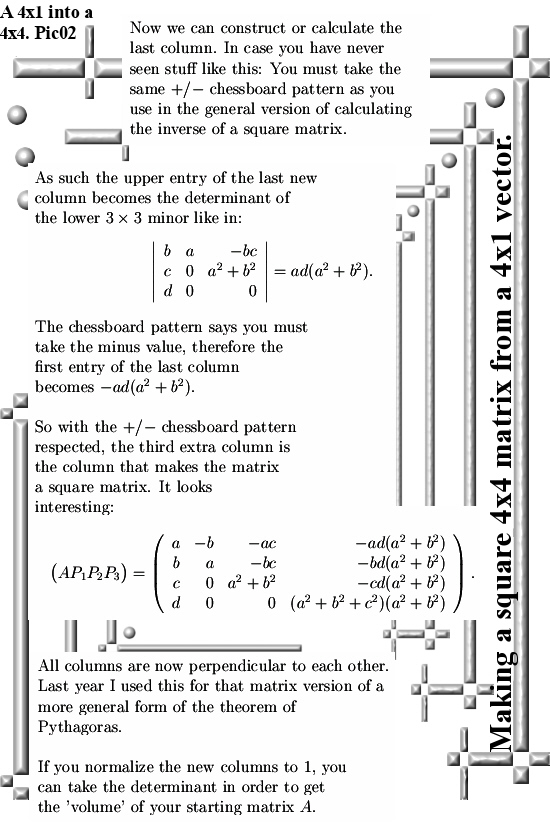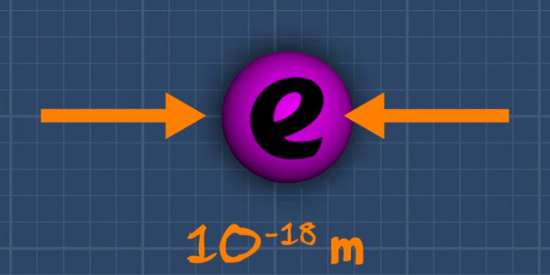This is one of the details I should have posted last year. So this post is some mustard after the meal. The content is just two pictures long. In it I show you how to calculate the area of a parallelogram in 4D space. After that we swap the two columns and use the same method again. In both cases the area of the parallelogram equal the square root of 500.
If you read stuff from this website you likely have enjoyed some classes in linear algebra, likely you know that if you swap two columns (or two rows) in a square matrix, the determinant changes sign.
But the way we turn a non-square matrix into a square matrix is done in such a way that it has to return a positive (or better: non-negative) number.
In this example you can see that if you swap the two spanning columns of the parallelogram, the first extra column or the third column in our final matrix also chages sign. So the overall determinant of the 4×4 final matrix ‘observes’ a swap in the first two columns and also a swap in the sign of the third column. Hence the determinant does not change sign…
Originally I only needed a few cute looking formulas for use on the other website. That are the two matrices below. But when finished I added some text and as such we have a brand new post for this website.
In this example I did not normalize the extra columns to one so if you want you can play a bit with it and as such observe how their norms are related to the area of the diverse parallograms in here. For example if you calculate the norm of the fourth column, it is the square root of 75,000 while the determinant of the whole 4×4 matrix is 75,000.
As such constructing square matrices like this always leads to the last column having a norm that is the square root of the determinant.
That is a funny property, or not?
Anyway here are the two pictures, the third picture is an illustration of how it was used on the other website. As usual all pictures have sizes of 550×825.


In the third picture I used an old photo of Brigitte Bardot as a background picture. Now both Brigitte and me we looked a lot more fresh back in the time from before they invented the stone age. Our minds were sharp and our bodies fast while at present day we are just another old sack of skin filled with bones, fat and some muscle. Life is cruel..

Ok, lets end this post now and see you around my dear reader.




